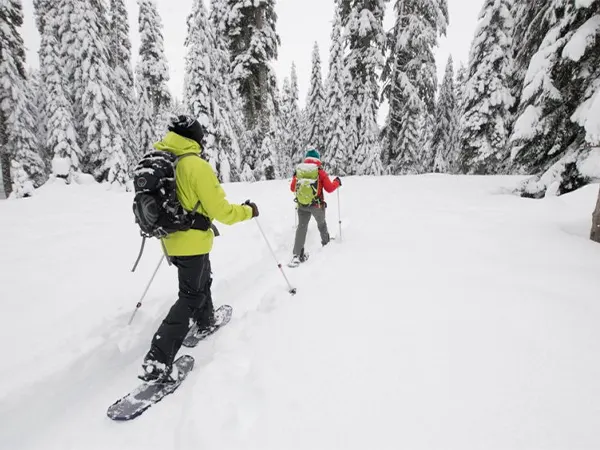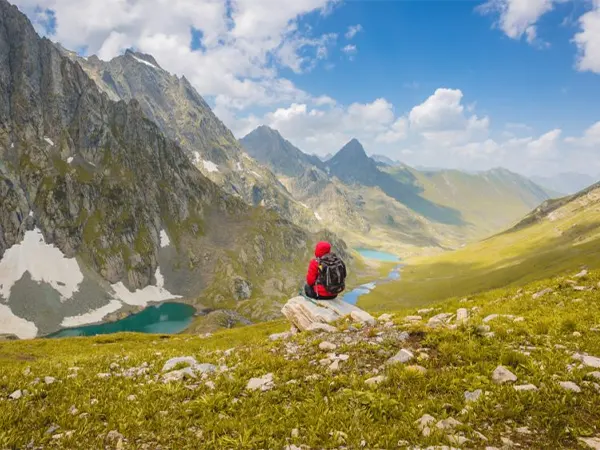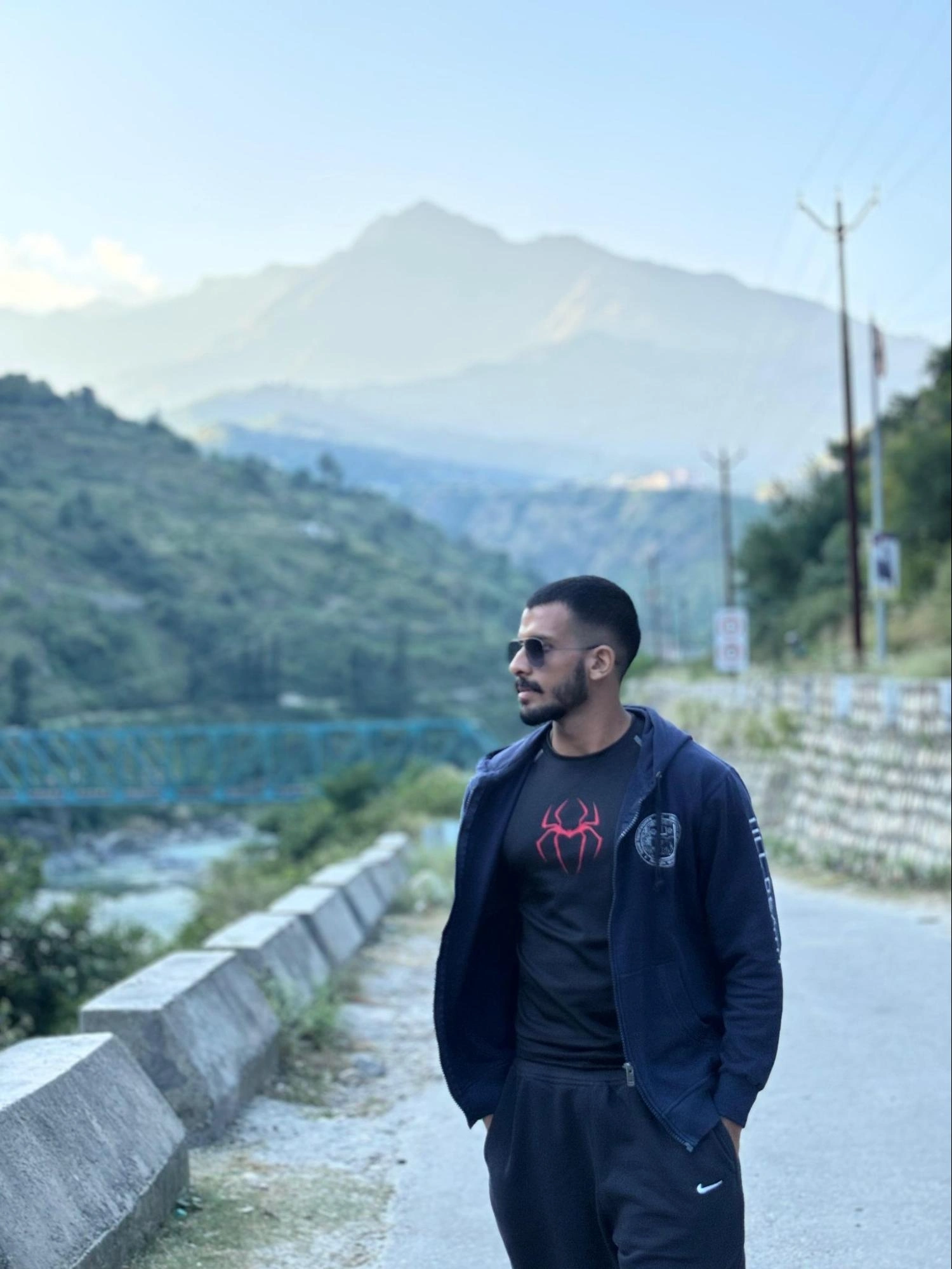Best Time to Visit Sonamarg: Seasonal Travel Guide 2025
Table of Contents
Toggle
Sonamarg, or “Meadow of Gold”, presents breathtaking alpine pastures filled with grasses glistening golden in the sunlight, the streams flowing from beautiful valleys, and the mountain slopes are crowned with merry little snow-white peaks meeting brilliant blue skies. At roughly 2,800 meters (9,200 ft) above sea level, Sonamarg is in the interior of the mesmerizing Kashmir Valley, and a study at the University of Kashmir from 2022 has noted significant seasonal changes from the study of this unique microclimate.
Sonamarg is an incredibly beautiful destination; it has all the raw beauty of the Himalayas. Many travelers come here for adventure, romance, and to explore the best places to visit in Sonmarg, including its stunning valleys, rivers, and snow-clad mountains. But because of its altitude, travelers can face some serious weather conditions. Figuring out the best time to visit Sonamarg is not really easy because it is different for everyone. It depends on the person’s desire and the expected experience they want to have.
Reference – University of Kashmir Department of Earth Sciences. (2022). Microclimatic Variations in Sonamarg Valley. Journal of Himalayan Ecology, 15(3), 45-62.
Sonamarg Weather by Month: Your Seasonal Compass
People on a trip to Srinagar are always looking for the most famous places in the city. Well, Srinagar is famous for Dal Lake. This majestic lake is known for its scenic beauty, floating gardens and traditional Shikara rides. Staying on a houseboat on the Dal Lake is an activity that draws people from different parts of the world.
Additionally, the city is also famous for its Mughal Gardens which allow people to take a peek into the striking gardens during the Mughal Era and reflect Persian-style landscaping. Apart from this, Srinagar is also home to some major religious sites like Hazratbal Shrine, Shankaracharya Temple, and the Jama Masjid. These places hold significant importance in the cultural heritage of the city. Srinagar is also renowned for Kashmiri handicrafts that you can buy like paper mache items, carpets and shawls. If you’re planning to explore the top destinations in Jammu & Kashmir, consider booking a complete Kashmir holiday package for a hassle-free experience.
Sonamarg Weather by Month: Your Seasonal Compass
Analyzing the Sonamarg weather by month is the key to an ideal trip. This heaven in the mountains experiences distinct seasons and weather; accordingly, landscapes with different colours exist.
Sonamarg in Winter Season (October - February)

Sonamarg in winter reaches its height between January and February. In these months, temperatures often fall below freezing, particularly at night. Sonamarg is turned into a clean, peaceful winter wonderland, as the whole valley is blanketed by deep snow with heavy snowfall.
Roads, including the popular Srinagar-Sonamarg highway, quite often get closed due to heavy snowfall. Due to these sayings, a popular question arises in mind: Is Sonamarg open in winter? Technically, yes, but access is not easily available, and usually it is impossible for ordinary tourists to visit during this period because of the potential risks. For real-time road updates, check the Jammu & Kashmir Traffic Police advisories.
Most of the hotel and its basic services are not available. It’s a moment of radical solitude and challenging beauty that is only appropriate for the travellers who are experienced and equipped with special assistance.
- Sonamarg Temperature Chart (Avg): Max: 0°C to 5°C / Min: -10°C to -15°C (or lower)
- Experience: Generally, there is no access because of deep snow and harsh weather conditions. As per the guidelines, general tourism is not advisable.
- Ideal for: Advanced, experienced, and equipped winter mountaineers and ski tourers, those seeking solitude.
The Thaw & Uncertain Beauty (March - April)
From the start of March, the temperature starts to decrease. Still, huge snow are left there, but most of the snow is at higher altitudes. Most of it melts down by April. Lower valleys begin to show patches of ground, and the great Sindh River gets full with melting water.
Sonamarg in April is a turning point. You may find last left out snowscapes, particularly towards Thajiwas, but also the first daring wildflowers thrusting forth. But the weather is still uncertain and unpredictable – the sun can hide and the situation can quickly turn into rain or even late snow showers.
Road access becomes better, but can still be problematic. When does Sonamarg become operational for tourists? Officially, the general tourism season begins in April, but complete access and activity restoration usually depend on conditions in May.
- Sonamarg Temperature Chart (Avg): Max: 8°C to 15°C / Min: -2°C to 5°C
- Experience: Melted snow, muddy pathways and tracks, unpredictable weather, newly grown greenery, and fewer crowds. Thajiwa’s access will probably be limited or prohibited by snow.
- Ideal for: Uncertainty-accommodating travelers, photographers documenting nature and its transformations, and budget travelers(travellers with low budget).
Spring's Peak & Summer's Dawn (May - June)
Sonamarg in May is the time when its green beauty awakens. Snow melts quickly from grasslands and lower slopes, bearing lush green carpets combined with colorful wildflowers – daisies, buttercups, and gentians. Sonamarg’s temperature chart is pleasant in the day but begins to be cool in the night.
Sonamarg in June witnesses summer fully taking over. Days are warm and bright, ideal for exploring and visiting. This happens when the trekking season starts for lower to mid-altitude trails.
During this time, Thajiwas Glacier access becomes possible, although the snow has still covered the glaciers and requires a small ride or trek of half an hour from the road. The Sindh River frightens travellers with snowmelt water, making it breathtaking but quite dangerous for rafting, mostly.
- Sonamarg Temperature Chart (Avg): Max: 18°C to 22°C / Min: 5°C to 10°C
- Experience: Freshly built green landscapes by nature, plants wth beautiful flowers, relaxing days with moderate temperature, cool nights, crystal clear visibility, accessible Thajiwas base, beginning of trekking season. Moderate crowd levels (not in peak summer).
- Ideal for: Nature enthusiasts, photographers, summer trekkers, family travelers, and travelers who seek comfortable weather with moderate temperatures.
Sonamarg in Summer Season (April - June)

This time, particularly in Sonamarg in July and Sonamarg in August, is generally regarded to be the optimal and best preferred time for a Sonamarg visit by most tourists. Why?
- Weather: The daytime temperatures are comfortably warm but pleasant (never more than 25°C), while nights are cool as usual. Enough sunshine and rain is there, though possible (particularly July’s afternoon showers), which generally does not last for long. Sonamarg’s weather in July is most stable and welcoming, as neither is it very hot nor very cold. For safety guidelines on river activities, refer to the Sonamarg Development Authority’s advisory.
- Activities: It is peak season for nearly everything:
- Trekking: Sonamarg trekking season is in full gear during this time. The high-altitude passes of Nichnai, Vishansar, Krishansar, and Gadsar are completely open, giving access to the beautiful lakes of the alpine(The Great Lakes Trek begins from here).
- Thajiwas Glacier: The best time for Thajiwas Glacier is now. The snowfield is accessible, providing easy enough contact with the glacier ice and heart-melting views of the surrounding mountains and waterfalls.
- Adventure Sports: Adventure sports in Sonamarg advance. This is the best time for river rafting in Sonamarg on the Sindh River – the water levels are high, with thrilling rapids (Grade II-III). Camping in Sonamarg under the star-filled sky is captivating, with plenty of exciting spots.
- Fishing: Fishing in Sonamarg (with permit) in the Sindh and its feeder streams is great during these months.
- Sightseeing & Relaxation: Just enjoying the pastures – the golden grasslands, the turquoise river, the beautiful glaciers – is unbeatable.
- Accessibility: All roads are open and accessible, and the valley is alive with activity. Hotels, campsites, and restaurants are in full swing.
- Sonamarg Temperature Chart (Avg): Max: 20°C to 25°C / Min: 10°C to 13°C
- Suitable for: Trekkers, adventure enthusiasts (rafting, camping), families, photographers, nature lovers, and first-timers.
Autumn's Golden Farewell (September - October)
September’s Sonamarg is perhaps the most breathtakingly beautiful month. You will experience very little summer crowd, but the climate is still mostly superb – warm sunny days with nature’s fresh air and chilled nights. There is a huge and we can say complete change in the landscape: green lands yield to fiery golds, ambers, and russets as willow and poplar trees are turned into almost yellow golden colour. This makes for an impressive contrast with the evergreen pines and the white glaciers.
In October, autumn deepens in Sonamarg. Days remain pleasant, but nights get much colder, especially towards the tail end. The possibility of early snowfall grows, especially in the latter half. Trekking remains wonderful in September, but passes at high altitude may begin closing by late September/early October due to the start of snowfall. Rafting continues till there is water. The camping in Sonamarg begins to decrease with time.
- Sonamarg Temperature Chart (Avg):
September Max: 18°C to 22°C / Min: 5°C to 8°C October Max: 12°C to 16°C / Min: 0°C to 3°C - Weather: Unique fall colours, fewer tourists (particularly after September), pleasant days, cold nights as usual, perfect trekking, possibility of early snow late Oct. Thajiwas is still open till heavy snowfall.
- Ideal for: Photographers, people seeking peace, trekkers (early Sept), autumn landscape lovers, and tourists who want to escape from peak summer crowds.
The Descent into Winter (November)
The temperature drops suddenly in early November. Sonamarg in November has cold days and frosty nights. The area experiences high and frequent snowfalls, especially at the peak, which covers the peaks and eventually the floor of the valley. Most of the hotels have stopped providing their service from this season. Though some access is available for tourists, as November advances, it brings an end to the peak tourist season.
- Sonamarg Temperature Chart (Avg):
November Max:5°C to 10°C / Min: -5°C to -2°C - Experience: Chilly weather, early snowfalls, rare services, lovely starkness, almost no tourists.
- Ideal for: Those who want solitude and the initial wintry views, ready for cold and possible access difficulties.
Sonamarg vs. Gulmarg Season-Wise: Choosing Your Hill Station
Both Sonamarg and Gulmarg are stunning places for tourists and travellers, yet they provide a different atmosphere:
- Summer (May-Sep): Sonamarg in summer means green grasslands, glaciers, trekking, and river rafting – a place for the exploration of high mountains. Gulmarg is all about its gondola (the second-highest in the world), golf, and green bowl-like landscape.
- Winter (Dec-Mar): Sonamarg during winter is mostly inaccessible. Meanwhile, Gulmarg is full of activity and fun, accessible through almost cleared roads, and famous for its heavy powder snow. Gulmarg has the highest ski resort, and it blooms more during the winter season.
Core Questions of Travellers:
1. What is the ideal or best month to visit Sonamarg?
For the action-packed version with the most pleasant weather, July and August are the best months. For beautiful views with fewer crowds and excellent weather: September. For nice weather and spring flowers: June. Prefer to visit from December to February, unless you enjoy hard weather conditions only.
2. Which month has snowfall in Sonamarg?
Generally, from December to February, the valley of Sonmarg is covered with snow. Snowfalls may occasionally begin as early as November and remain till March and April. Altitudes higher than Sonamarg (such as Thajiwas) may have snow till June.
3. How many days are sufficient for Sonamarg?
A 3 to 5-day duration Sonamarg trip is enough for exploring and experiencing Sonamarg:
- 2-3 days: Thajiwas Glacier, views of the Sindh River, brief walks, perhaps a day trip towards Baltal or a quick rafting session. Ideal for a chill-out retreat.
- 4-5 days: a longer trek may be till Nichnai, serious rafting, fishing, overnight camping, or just more time for enjoying and feeling the ambience from within.
- 5+ days: Required if you have planned for a big trek like the Great Lakes Trek from Sonamarg.
4. Is Sonamarg worth visiting?
Indeed, yes. It provides a unique, natural, and less touristy Himalayan experience than Gulmarg or Pahalgam. Its closeness to glaciers, the spectacular valley cut by the Sindh river, its golden grasslands, and its status as the gateway to legendary treks make it notably attractive. It’s worth visiting for:
- Unmatchable high-mountain sceneries.
- Visiting the Thajiwas Glacier.
- Exciting treks.
- River rafting.
- Tempting summer pastures and autumn colours.
- A slightly more adventurous vibe than other Kashmir hill stations.
5. Which is the best site to book tour packages of Sonamarg, Kashmir, and other places?
Kashmir Holiday Package offers the best tour packages for various places. It is a Srinagar-based local travel firm specializing in tours across Kashmir, Jammu, Leh, and Ladakh.
The Verdict: Your Sonamarg Moment Awaits
The key to know is that Sonamarg does not have a single fixed “best” time of year to go. Aside from this, the best time is completely up to your preferences for landscape and activities – if you want summer flowers and adventure, autumn leaves and calm, spring renewal, or tough winter scenery. Choose your best time based on your personal preferences and desires, and you’ll surely get your own perfect “Meadow of Gold” experience.
Author
-

Follow Me: Profile Summary Dushyant is a globetrotter with the urge to seek new cultures with the vision to present the hidden gems to the world. Each chapter of his journey showcases rich cuisine and tranquilizing beauty. Kashmir Holiday is not just a platform but a very own personal diary that has some of the best adventure guides.
